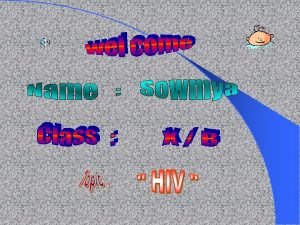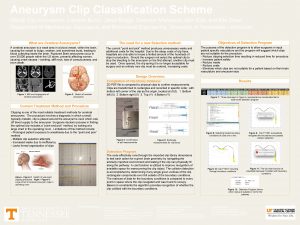Starter q Watch this clip q Now watch



















- Slides: 19


Starter: q. Watch this clip. q. Now watch this clip. q. What is the message here?

What are the global patterns of disease and can factors be identified that determine these? Key Idea 1 a: Diseases can be classified and their patterns mapped. The spread of disease is complex and influenced by a number of factors. Learning Objectives: q To analyse how disease spreads (diffusion).

Disease Diffusion q Diffusion means a disease is transmitted/spread outwards from its origin across space to a new location. q The spread of disease could be contagious from one directly infected person to another non-infected person. q Infectious diseases don’t stay put - they tend to move and spread. q Diseases are mobile than previously, because we are mobile than before [WHY? ] + we carry diseases with us [example? ]

Diseases are mobile than previously, because we are mobile than before … in a globalised world, increasingly connected by an integrated transport system there is strong evidence to suggest that disease can spread quickly via roads at the national scale + airports at regional/global scale. Why pandemics spread: watch + interactive

4 1. 2. 3. 4. Types of Spatial Diffusion Expansion Contagious Hierarchical Relocation A Level textbook Note: a disease can spread with a combination of above types

1. Expansion Diffusion • Infection spreads out from source in all directions from point of origin. • Expanding disease diffuses outwards into new areas. • The disease often intensifies in the originating area. • An outbreak of TB is an example of expansion diffusion. t 1, t 2, t 3> denote time 1, 2 & 3 respectively

Example of Expansion Diffusion • 1918 Spanish Flu killed an estimated 40 million people worldwide within just a few months. • Also the recent H 1 N 1 swine flu virus from Mexico.

2. Contagious Diffusion • Infection is spread through direct contact with the carrier. • Individual hosts carrying the disease pass it on to new contacts. • Strongly influenced by distance - nearby individuals/regions have much higher probability of contact than remote ones. • Contagious spread tends to occur in a centrifugal manner from the source region outward.

Early medical geography map by Jon Snow identifying the cluster + source of a cholera outbreak at Broad Street, London in 1852

Example of Contagious Diffusion • The Common Cold: – Max gets a cold. – In the next few days those who sit near him in class get the same cold from him sneezing near them or touching desks, etc. – Those people can then get the same cold and pass it to people sitting near them. – And then spread it in their form groups or take it home or give it to people in Heathfield or on planes/trains/tube etc. q The Ebola epidemic in West Africa in 2014 -15 is a classic example of contagious diffusion.

3. Hierarchical Diffusion • The infection spreads down through a particular system. • Spreads through an ordered sequence of classes or places, usually form the largest centres with the highest connectivity to smaller, more isolated centres. • E. g. from cities to large urban areas to small urban areas. • Diffusion is also channelled along road, rail and air transport networks which facilitate contact between carriers and a susceptible population.


Examples of Hierarchical Diffusion • HIV/AIDS in USA appeared first in San Francisco + then major cities such as LA/ New York - it then spread to smaller cities and then towns • In 2009, H 1 N 1 [Swine Flu] Virus - this disease first started in Mexico City, but first saw prevalence in other large cities (LA, NYC, Chicago) before seeing a presence in smaller cities or rural towns. • It became a pandemic via international flight routes and airports. • In the USA, it resulted in 61 million cases and 12, 500 deaths.

4. Relocation Diffusion • Infection spreads into a new area, leaving behind its origin or source of the disease • It dies out in its previous location t 1, t 2, t 3> denote time 1, 2 & 3 respectively

Example of Relocation Diffusion • Migration of disease carrier e. g. migrant infected with HIV moving into a new location [BUT not contracted by all in path – WHY? ] WHY • Disease spreads via transportation networks. • Spread of HIV in southern Africa along lorry routes • Cholera in Haiti 2010 killed 7000 was brought in by emergency aid workers flown in from Nepal.

• There are some cases of malaria in the US every year for example, and most of those are close to airports. • Mosquitoes survive in the plane just long enough to bite someone when they leave. • Incidence of disease refers to the rate of new (or newly diagnosed) cases of the disease. It is generally reported as the number of new cases occurring within a period of time e. g. per month or per year. • Prevalence is the actual number of cases alive during a period of time or at a particular date in time.

1. What is meant by diffusion? 2. What are diseases more mobile than ever before? What process has facilitated the diffusion of disease? 3. Complete the table below for each of the 4 types of disease diffusion. Type Diagram Describe Examples of disease Expansion Diffusion Relocation Diffusion Contagious Diiffusion Hierarchical Diffusion 4. Define the terms ‘incidence’ of disease and ‘prevalence’ of disease’.

Possible Exam Questions • Explain how the geographic concept of diffusion by _____*______ applies to the spread of diseases with reference to one disease. *Insert any diffusion type in the blank space
 Watch a clip and answer questions
Watch a clip and answer questions Watch a video and answer questions
Watch a video and answer questions Now i see it now you don't
Now i see it now you don't It's very interesting
It's very interesting Clipdini
Clipdini Lisa exposes an iron paper clip to a very strong magnet
Lisa exposes an iron paper clip to a very strong magnet Rotc timeline
Rotc timeline Atri clip
Atri clip Introductions clip art
Introductions clip art Fipa clip
Fipa clip Adobe premiere android
Adobe premiere android Clip art word
Clip art word Office microsoft
Office microsoft Evaluation clip art
Evaluation clip art Youtubecomwatch
Youtubecomwatch Mathswatch area and perimeter answers
Mathswatch area and perimeter answers Eye piece function
Eye piece function Luke 6 27-38 images
Luke 6 27-38 images Westward expansion clipart
Westward expansion clipart The most important night of melanie's life
The most important night of melanie's life




































